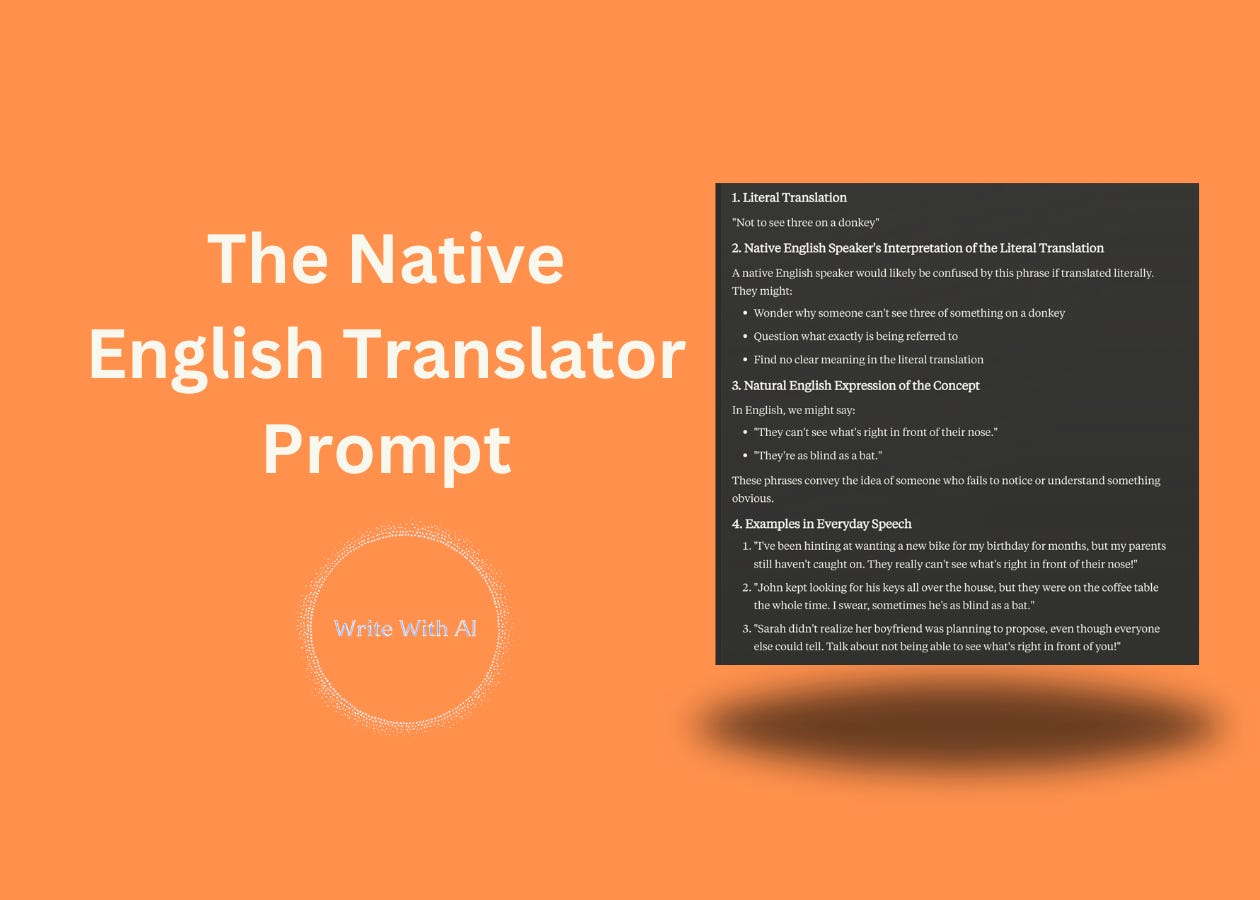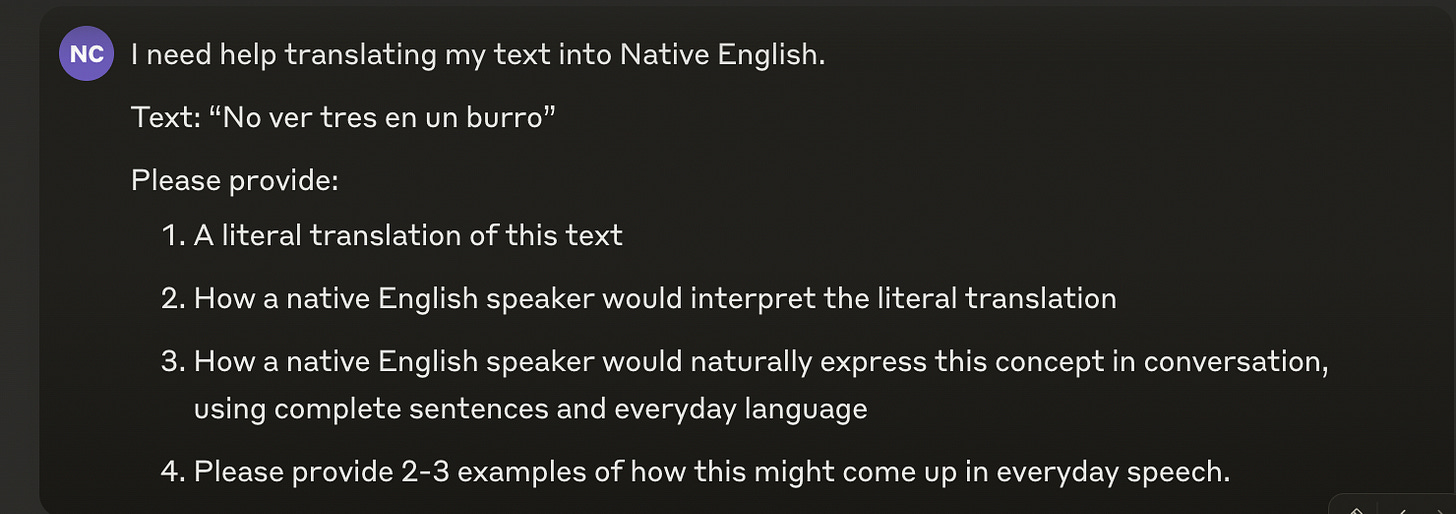Hey there Digital Writers!
Writing naturally in English is tough when it's not your first language.
You might have the vocabulary, but stringing words together like a native speaker? That's a whole different challenge.
Last week, a student in our Premium Ghostwriting Academy faced this exact issue. They were spending more time finding the right words than actually writing their first Educational Email Course.
And we thought why not use AI to help?
So, we wrote up a quick prompt to speed up the process for our non-native students. And we thought some of you might find it useful too.
Let’s dive in.
How To Use AI To Write Native English
English is a complex language with a lot of quirks.
Word-for-word translations often sound awkward. For example, “Estar en la edad del pavo” turns into “Being in the age of the turkey” in English, which makes no sense. The natural translation? “Going through the awkward teenage years.”
What works in one language might need a complete rewrite in English.
When you use AI for this, you can:
Learn new ways to say things
Write faster and with more confidence
See how native speakers would phrase your idea
It’s better than Google Translate because AI can give you both the literal translation of your language, how it might be interpreted in English, and how to say it naturally so you don’t get any awkward stares.
Let’s take a look at the prompt.
The "Native English Translator" Prompt
Here's what this prompt does:
Takes your original text in your language
Gives you a literal translation
Shows you how a native English speaker would say it
Provides real-life examples of how it's used
Here’s the prompt:
I need help translating my text into Native English.
Text: {Insert your text}
Please provide:
1. A literal translation of this text
2. How a native English speaker would interpret the literal translation
3. How a native English speaker would naturally express this concept in conversation, using complete sentences and everyday language
4. Please provide 2-3 examples of how this might come up in everyday speech.
Please format your response to make it easy to read and understand.
Use h3 for sections.
Let's try it out.
Say you're writing an email and want to use the Spanish phrase “No ver tres en un burro.”, but you're not sure how to phrase it naturally in English.
You'd copy the prompt into ChatGPT (or whatever AI you're using) and plug your phrase into the prompt.
After you hit send, the AI comes back with the natural way to say it, plus some real examples of how people use it.
For example:
This matters because knowing the words isn't the same as knowing how to use them. This prompt helps you bridge that gap.
Use this prompt when you’re unsure about what or how to say something. And if you need more clarity, follow up and ask for it until you can confidently say what you mean, clearly and naturally.
That’s it!
Chat soon,
Co-Founders of Ship 30 For 30
Co-Founders of Premium Ghostwriting Academy
Co-Founders of Typeshare
Co-Founders of Write With AI
PS…Are you ready to become a master prompt writer—and accelerate your trajectory as a Digital Writer? If you are, we’d love to show with you everything we’ve learned about Prompt Engineering after spending 1,000+ hours tinkering with AI writing tools and writing 500+ prompts (and using them to power-level our own content). Click here to join the Prompt Engineering Playbook—and fast-track your content creation today.







What a cool idea. I never thought of using GAI in this way.
The Ship 30 crew chose an idiom to show the power of this prompt, since the meaning is less obvious.
A piece of writing advice, avoid using idioms, cliches, or jargon in your writing. Prefer to use simple active verbs in declarative sentences.
This is great! I want to try to translate to another language to send things to my French followers. I hope I’m not making an unreasonable assumption!